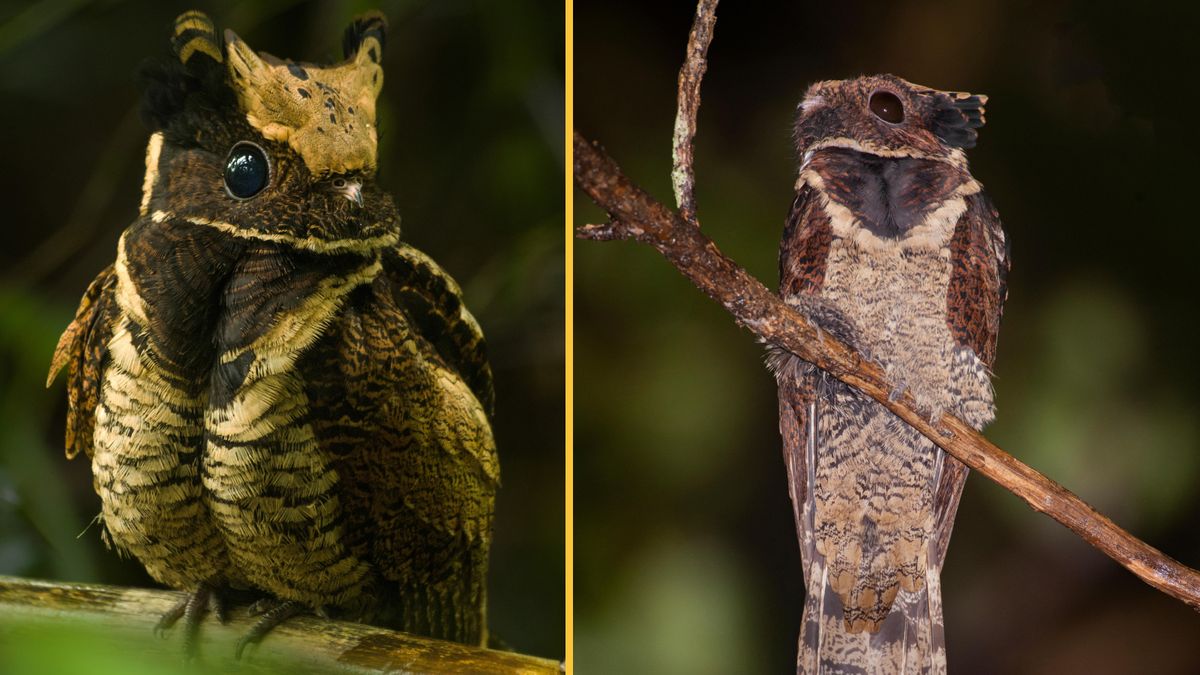QUICK FACTS
Name: Great eared nightjar (Lyncornis macrotis)
Where it lives: Sri Lanka, Bangladesh, India, Indonesia, Laos, Malaysia, Myanmar, the Philippines, Thailand and Vietnam
What it eats: Moths, beetles and other flying insects
With its large, forward-facing eyes and head tufts that look like ears, the great eared nightjar resembles a dragon more than a bird. Often nicknamed the “baby dragon,” this otherworldly-looking creature has several distinctive traits, including an eerie, haunting call.
Great eared nightjars, which reach between 12 and 16 inches (30 to 40 centimeters) in length, live in dense, low-lying woodlands across South and Southeast Asia. These elusive, nocturnal birds are masters of camouflage and blend into the forest floor, thanks to their mottled brown, gray and black plumage. By day, they remain motionless among leaf litter or tree stumps, with their coloring protecting them from predators.
Great-eared Nightjar (Call) – YouTube

Rather than building a traditional nest, the great eared nightjar lays a single egg directly on the forest floor or in a shallow bed of leaves. While the exact reason they avoid nesting in trees like many other birds remains uncertain, it’s likely that their natural camouflage offers effective protection for both egg and chick against predators.
Their habitat is often dense with vegetation and trees, making it difficult for predators to find the birds and their eggs. Both parents incubate the egg until it hatches. Once the chick has emerged, it remains camouflaged on the forest floor where it is fed by its parents until it can fend for itself.
Despite their dragon-like appearance, great eared nightjars feed primarily on moths and other flying insects, which they catch mid-air in the twilight hours using their wide, gaping mouths. Their flight is silent and smooth, allowing them to hunt quickly and efficiently without alerting predators, such as owls and other birds of prey.
The call of the great eared nightjar is a deep, haunting sound that echoes through the forest at dusk and dawn. This distinctive call includes a sharp “tsiik” noise followed by a pause and a longer, whistle-like call. Nightjars rely on these vocalizations to breed. Males often use their calls to mark their territories, attract mates or warn others of dangers.

























